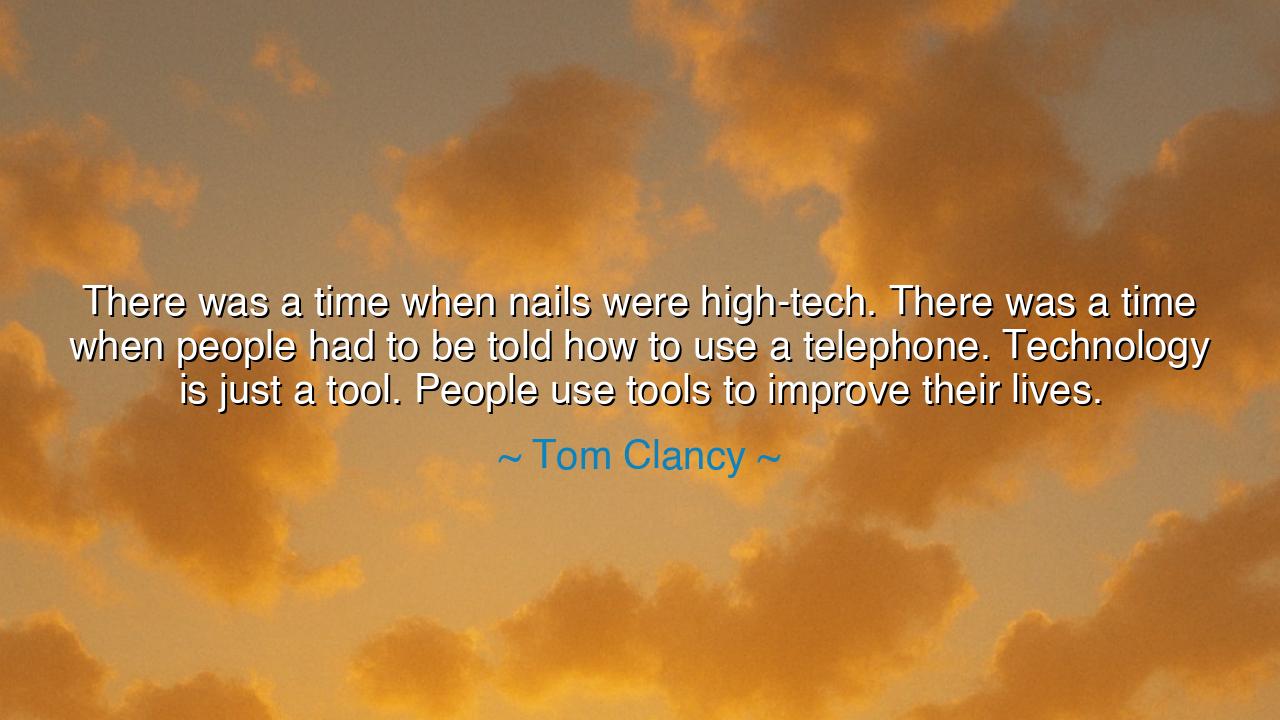
There was a time when nails were high-tech. There was a time
There was a time when nails were high-tech. There was a time when people had to be told how to use a telephone. Technology is just a tool. People use tools to improve their lives.






Tom Clancy, a chronicler of modern conflict and human ingenuity, once said: “There was a time when nails were high-tech. There was a time when people had to be told how to use a telephone. Technology is just a tool. People use tools to improve their lives.” In this reflection, he strips away the glamour of invention and reminds us that every marvel, no matter how wondrous it seems in its birth, is but a tool in the hands of men and women. What dazzles us today will one day appear ordinary; what is ordinary now was once the cutting edge of civilization.
Think first of the humble nail. In an age long past, when wood and stone were lashed together by rope or held in place by wedges, the forged iron nail was a revolution. It transformed homes, ships, and fortresses. It allowed mankind to build higher, stronger, longer-lasting. What we now dismiss as common was once the very spearhead of progress. So too does Clancy remind us that the extraordinary becomes ordinary with time, and that the measure of technology is not its novelty, but its usefulness.
Then came the telephone, a miracle of connection. When Alexander Graham Bell first unveiled it, people were skeptical. Why should one speak into a machine when letters had served for centuries? Manuals had to be written, instructions given, demonstrations performed, so that people could learn to embrace this new tool. Yet in time, the telephone ceased to be a marvel and became a necessity, woven into the fabric of daily life. In this tale lies a truth: every technology begins as a mystery, becomes a marvel, and eventually turns into something so common we forget it was once a miracle.
The ancients knew this cycle in their own way. When the wheel was first fashioned, it was no less revolutionary than the smartphone is today. At first, it was strange, a round object that carried burdens and moved with swiftness. Yet soon it became indispensable, changing commerce, agriculture, and war. The tool, once questioned, became the very foundation of society. So it has been with every invention since: from fire to printing, from electricity to the digital age, tools reshape human destiny.
Clancy’s wisdom lies in his reminder that technology is not an end in itself. It is not sacred. It does not hold meaning apart from the hand that wields it. The hammer can build a temple or crush a skull; the internet can connect the lonely or spread deceit. Technology is just a tool. It is the heart of humanity that determines whether the tool heals or harms, uplifts or enslaves. To confuse the tool with progress itself is folly; true progress lies in how wisely and compassionately the tool is used.
History gives us a sobering example in the tale of nuclear energy. Here was a discovery of immense promise, capable of lighting entire nations with near-limitless power. Yet it also birthed the bomb, which scarred cities and threatened the survival of the world. The same tool brought both promise and peril. Thus, Clancy’s words ring clear: it is not the technology itself, but how we choose to wield it, that defines whether it serves life or death.
So, dear listener, take this teaching as your own: do not worship technology, nor despise it. See it for what it is—a tool. Ask always, what can this tool build? Whom can it serve? How can it improve life without diminishing the dignity of others? Learn from the story of the nail, the telephone, the wheel, and the atom: every tool is born in awe, but it is in our use of it that its true meaning is revealed. Progress is not in invention alone, but in the wisdom to wield invention well. And those who remember this will not be mastered by their tools, but will remain their rightful masters.






AAdministratorAdministrator
Welcome, honored guests. Please leave a comment, we will respond soon